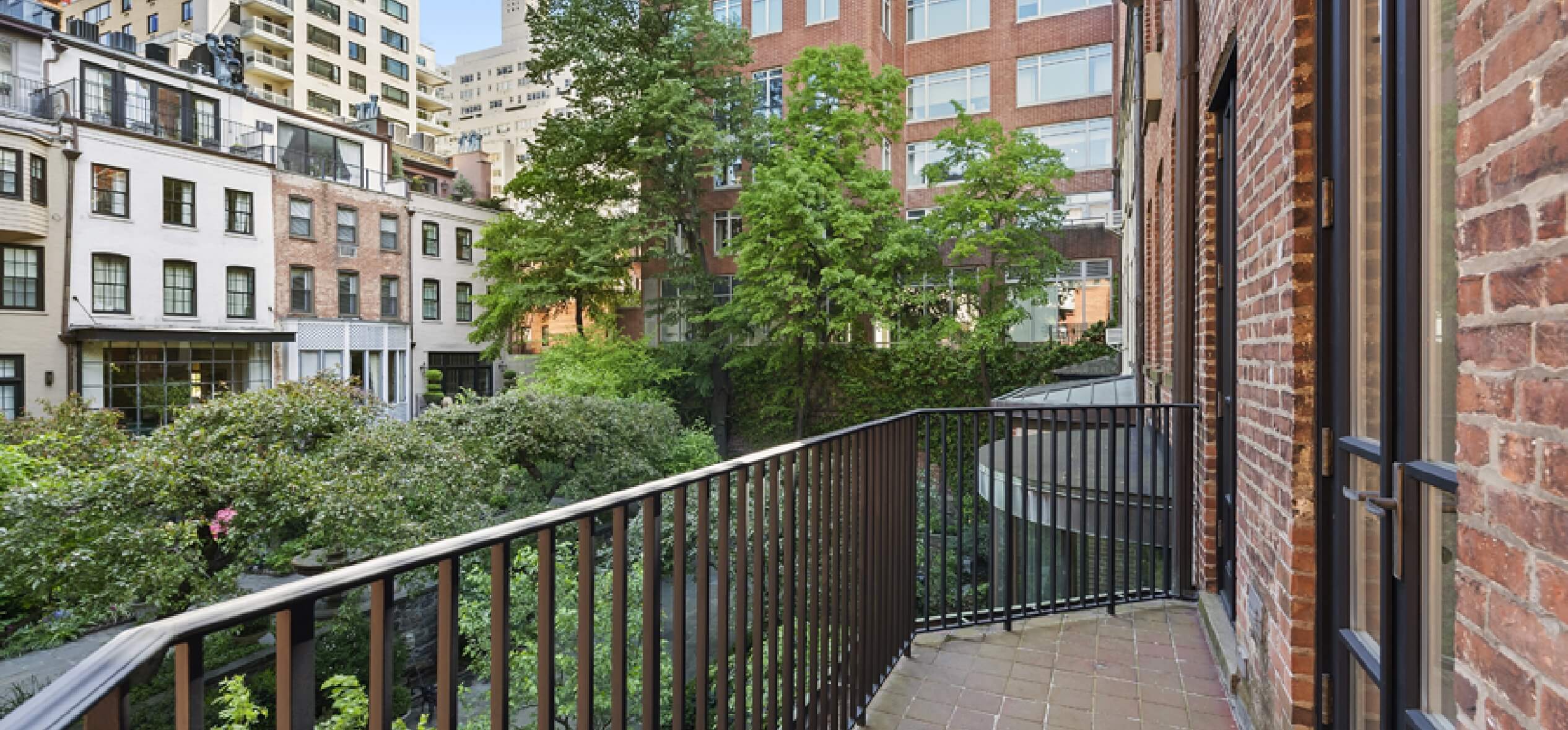A townhouse brokerage market leader since 1990, Vandenberg, The Townhouse Experts ® has an obvious passion for what they do. Headed by husband and wife team Dexter Guerrieri and Jane Van Den Berg Ordway, who are townhouse owners and investors themselves, Vandenberg has consistently been a market leader for listings and top-of-market sales. They value and appreciate townhouse history and architecture and have grown to become some of the foremost experts in this real estate niche.
“We help the walls talk a little bit,” said Guerrieri. “What happened in that townhouse, or on the street since it was built? It’s like a micro-history of New York.”
Elliman Insider sat down with Guerrieri and Listing Director Nicole Kats to learn more about the ins and outs of New York City’s competitive townhouse market.
How do townhouses different from co-ops and condos??
In the New York housing market, co-ops and condos are common and often are in large, multi-unit buildings. A townhouse, however, is a completely different experience. “In a townhouse, you live on multi-levels versus on one floor,” said Kats. “It’s the feeling of a home. There’s no co-op board watching over you, and you’re not paying monthly maintenance, so you actually get a lot for your money.”
“Many people buy townhouses because they can be the queen or king of their own domain,” Guerrieri added. “They can do construction when they feel like it. They have their own garden and their own backyard.”
Is a single-family or multi-family townhouse best?
“A single-family townhouse is the ideal form of city living. However, for budget reasons in premium neighborhoods, many buyers are happy to pay a lower price and simply live in two or three of the floors,” Kats said.
When purchasing a single-family townhouse, the owner owns and has access to the entire building, just like any home. A multi-family townhouse, on the other hand, has been separated into different apartments—often with tenants, said the team. If purchasing a multi-family home, you will often inherit the tenants who are current residents and become responsible for maintaining their leases and “providing a clean building,” free of violations.
Unlike a single-family townhouse where the resident is solely responsible for the mortgage and maintenance, in a multi-family townhouse, tenants pay rent which can help bring down the cost.
“Over the last 125 years, townhouses were often divided into multiple units. They were built as single family homes, but dividing them up helped owners hold onto their properties or accommodate extended family,” said Guerrieri.
What are some of the most important factors to consider when buying?
“Location is the number one thing,” said Kats. “People definitely start in specific neighborhoods, but within that neighborhood, there are blocks that are considered more valuable than other blocks. Other factors include how recently it was renovated, the configuration of each floor, the width and whether it is four or five levels.”
Any advice for renovations?
When considering renovations, it is important to understand city regulations, like landmarks which prevent any changes to the exterior. But on the inside of the home, new owners can make almost any changes they wish.
“Townhouses with original mantles and banisters are selling, but those with top to bottom wainscoting and heavy or dark woodwork seem to be generally less desirable these days. You want to keep some of that historical detail, which is really what a New York City townhouse is all about. A modern kitchen and bath and central air are important,” Kats said. The team recommends balancing modern upgrades with traditional detailing to strike the perfect balance.
How do you price a townhouse?
The unique features of a townhouse affect its value. “One of the biggest challenges is pricing them. It’s not like apartments where we can look at the 14th floor and the 15th floor in the C-line for recent sales. The location from one block to the next could have a 20 percent differential in the value of the house,” said Guerrieri.
“No two gardens are alike, no two facades are alike. Even if they’re on the same block, one could be on the corner closer to Central Park, which makes it more valuable,” said Kats. “Owners rely on us to show them the exact sales comparables, not just overall price-per-square-foot data for an entire neighborhood. We love our work partly because of these challenges.”
Link to Full Elliman Insider Article: https://www.elliman.com/insider/2018/09/28/questions-answers-townhouse-experts/





